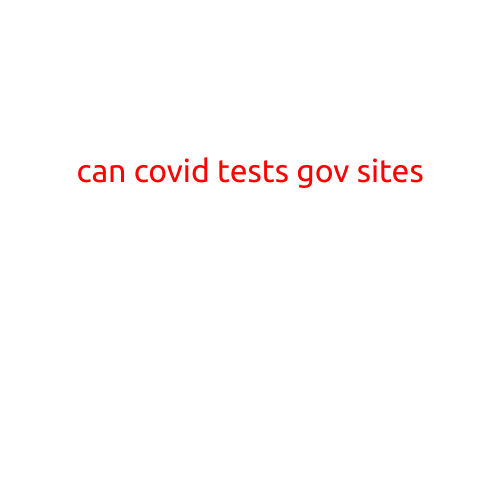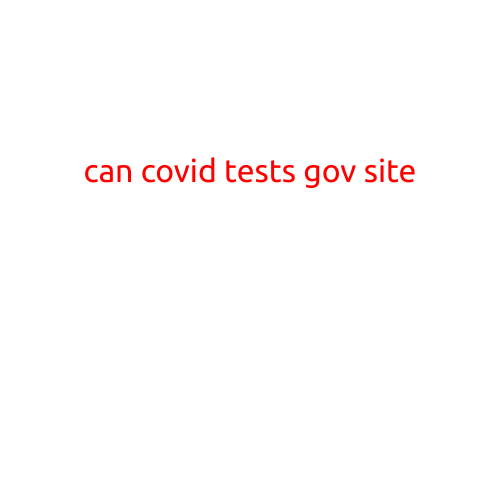
Can COVID Tests and Government Sites Increase Public Access to Healthcare?
The COVID-19 pandemic has accentuated the importance of access to healthcare, particularly when it comes to testing and treatment options. Governments worldwide have played a crucial role in addressing this issue by setting up testing sites and providing online platforms for citizens to access healthcare services. In this article, we’ll explore how COVID tests and government sites can increase public access to healthcare.
Benefits of Increased Access to Testing
- Rapid Detection and Isolation: Early detection of COVID-19 cases through rapid testing allows for prompt isolation, reducing the risk of transmission and containing outbreaks.
- Accurate Diagnosis: Government-sponsored testing sites can provide accurate diagnoses, ensuring that individuals receive the right treatment and care.
- Reduced Hospital Wait Times: By increasing testing capacity, governments can alleviate pressure on hospitals, reducing wait times for emergency services and improving overall healthcare outcomes.
- Enhanced Public Health Surveillance: Testing data can help governments track the spread of the virus, identify high-risk areas, and inform public health strategies.
How Government Sites Enhance Healthcare Access
- Convenience: Online platforms and mobile apps allow citizens to schedule appointments, access test results, and consult with healthcare professionals remotely.
- Accessibility: Government sites are often equipped to serve diverse populations, including rural or underserved areas with limited access to healthcare services.
- Cost-Effective: Government-funded testing is often free or low-cost, reducing financial barriers to accessing healthcare services.
- Streamlined Process: Online platforms can simplify the testing process, reducing wait times and administrative burdens on healthcare providers.
Examples of Successful Government-Sponsored Testing Initiatives
- In the United States: The Centers for Disease Control and Prevention (CDC) and the Department of Health and Human Services (HHS) have established a network of testing sites across the country, offering free or low-cost testing to all Americans.
- In the United Kingdom: The National Health Service (NHS) has launched a COVID-19 testing program, providing free testing to all citizens, including those with symptoms, close contacts, and in high-risk groups.
- In Australia: The Australian Government has established a COVID-19 vaccine and testing program, offering free testing to all citizens and priority access to vaccines for high-risk individuals.
Challenges and Opportunities for Improvement
- Digital Divide: Not all citizens have access to smartphones, computers, or internet connectivity, limiting their ability to access online testing platforms.
- Language Barriers: Government sites may not cater to non-English speaking populations, creating barriers to accessing healthcare services.
- Stigma and Barriers to Testing: Fear of stigma, lack of awareness, or perceived cost associated with testing may discourage individuals from seeking necessary care.
- Ongoing Funding: Governments must ensure sustained funding for COVID testing and healthcare services, particularly as the pandemic evolves.
Conclusion
Government sites and COVID tests can significantly increase public access to healthcare by providing convenient, accessible, and cost-effective testing options. While challenges remain, the benefits of increased access to testing, diagnosis, and treatment far outweigh the costs. By addressing the digital divide, language barriers, stigma, and ongoing funding concerns, governments can ensure that all citizens receive the healthcare services they need to recover and thrive.





